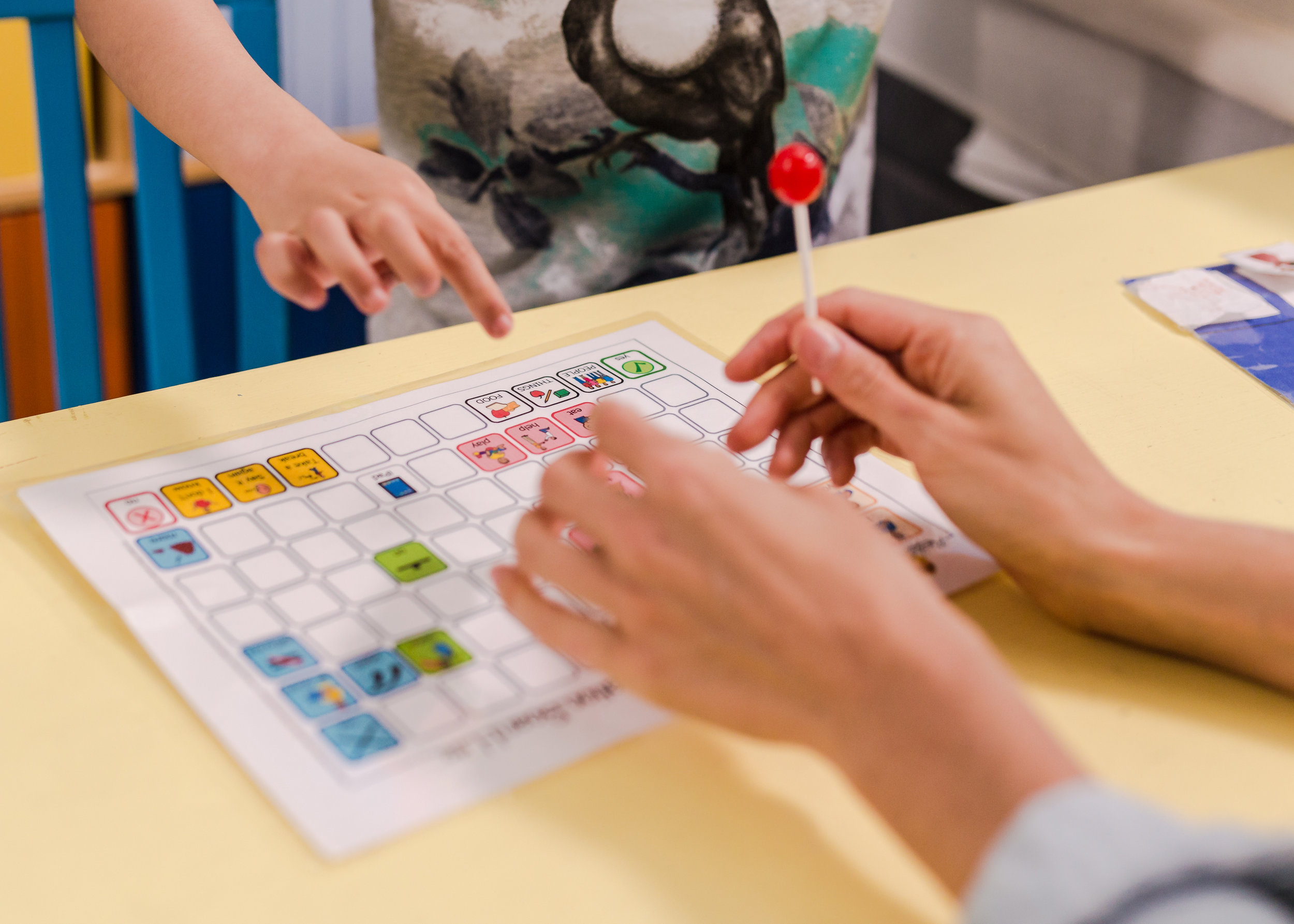Struggling to Communicate with your Child? Try AAC
In the special needs community we LOVE a good acronym, but if you don’t know exactly what each one means they can feel overwhelming and unintelligible.
You might be asked:
Does your child get ABA?
Is it included in your IEP?
Do you have a good SLP?
Argh!
I sympathize; in grad school an entire portion of one of our exams was dedicated to acronyms!
However, I do have a favorite.
AAC.
It stands for Augmentative and Alternative Communication, and it basically refers to any kind of communication system that helps kids (or anyone, for that matter) express their needs to you if they can’t use verbal speech.
And, what’s more, it’s not all high tech.
One of the biggest misconceptions I see in my practice is that people think that AAC only refers to sleek gadgets activated by fancy buttons.
In fact, some of the most effective AAC supports I use every day are quite simple, and considered “no tech” or “paper based”.
NO TECH= NO EQUIPMENT
No tech AAC means that you don’t need any equipment at all!
It amazes me how savvy children can be to get what they want, especially children with limited verbal communication!
They are looking with their eyes, pointing with their fingers and making facial expressions to communicate to us how they are feeling.
Sometimes we get so caught up in technology that we forget the power of teaching a simple head shake for “no” or pointing to something that is desired. Those gestures are universally understood, even by grandma and grandpa.
PAPER BASED= NO BATTERY/ MADE OF PAPER
Paper based AAC essentially means there’s no battery.
I love low-tech AAC because it really helps students who are visual learners. Visual aids such as pictures or cues cards can help ease that burden.
One of my favorite tools to use is a communication board.
Make sure to get my free communication board to help your child get beyond single words.
Something else we need to remember is that sometimes high tech AAC fails us. Screens smash, batteries die, iOS updates take way longer than you expected.
TALKING TIP: You always want to have a solid low tech backup so that your child isn’t stuck without the means to communicate with you.
HIGH TECH= REQUIRES A BATTERY
High tech AAC is extremely useful, when used well.
Technology advances have been a serious game-changer in helping children with complex communication needs.
Communicate with the world using just the tap of a button!
And if your child doesn’t have access or mobility to tap a button, rest assured, we can now use eye-gaze technology to track the movements of their eyes. For children who are non-verbal, a high tech speech-generating device affords a child the opportunity to speak when they might otherwise have no means of verbal communication.
With so many apps and systems out there, however, it’s challenging to know which one has the features that are optimal for your child’s specific needs.
My best piece of advice? Focus on core word vocabulary to help support a child’s ability to generate novel language.
Over to you
Have you tried AAC with your child? What’s been your experience with AAC? Have you and your child had any success with no, low or high tech? Let me know in the comments below - I’d love to hear from you!



